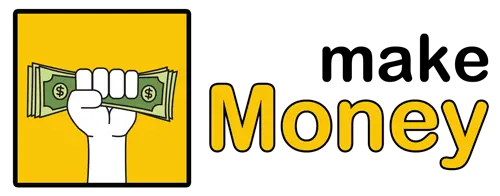Optimizing placeholders within a website's content strikes a fine balance between enhancing user experience and maximizing ad revenue. This delicate equilibrium requires a strategic approach, where the placement and size of ads are adjusted dynamically to fit the browsing habits of individual users. By leveraging Artificial Intelligence, this process becomes more refined, allowing for a customized ad viewing experience that aligns with user behavior without compromising the integrity of the site's content.
Placeholder Optimization
The strategic distribution of placeholders across a website directly impacts site health metrics. Sites overloaded with ads can slow down page loading times, significantly detracting from the user experience. Such slowdowns can lead to higher bounce rates and lower session durations, which negatively affect site health over time.1 Conversely, a well-optimized placeholder setup, informed by AI analysis, ensures that ads are efficiently loaded and positioned in a way that minimizes their impact on site performance.
The positioning of placeholders also matters greatly. Placing multiple placeholders denser at the top of the page versus spread throughout can offer AI more initial data points to work with, often resulting in quicker optimizations for revenue and user experience. Having placeholders in key strategic locations allows AI to test various ad formats and locations effectively without compromising the content's readability or value.
Revenue optimization is closely tied to the intelligent placement of these placeholders. Certain regions of a webpage, especially those immediately visible without scrolling (known as "above-the-fold"), tend to have a higher visibility and engagement rate. By strategically placing placeholders in these regions while ensuring a smooth content consumption experience, publishers can significantly enhance their ad revenue potential without negatively impacting user satisfaction.
Anchor ads, which remain visible even as the user scrolls, exemplify an innovative use of placeholder optimization. These ads, fixed at the bottom of the user's screen, provide a constant opportunity for engagement without detracting from the content itself. Configuring placeholders to support such adaptive ad strategies further boosts revenue while maintaining a seamless user experience.
An essential component of optimizing placeholders is the adaptiveness in sizing and ad format selection. Responsive designs that adjust based on device type—like transitioning smoothly between desktop and mobile views—are fundamental. Creating placeholder setups that accommodate various screen sizes effectively ensures that ads rendered are not only appropriate for the content's context but also for the user's device.
The comprehensive analysis of user data by AI to inform placeholder optimization aids publishers in avoiding common pitfalls, such as ad dilution—wherein too many ads compete for users' attention on a single page, reducing overall engagement and value per ad.2 By focusing on strategic ad placement enabled by advanced placeholders and AI optimizations, publishers witness an uptick in user engagement rates and an improvement in overall site health metrics.
Proper optimization of placeholders guided by AI insights helps publishers harmonize ad revenue generation with exceptional user experiences. It emphasizes a balanced approach where ad placements are thoughtfully integrated within content, enriching the user's journey across the website instead of obstructing it. This strategic approach grants publishers the ability to navigate the digital landscape successfully, ensuring sustained growth in both audience satisfaction and revenue generation.

Ad Placement AI
AI and Ad Placement: Balancing Site Health and Revenue
The dynamic landscape of digital advertising continually evolves, calling for an intelligent approach to ad placement that melds seamlessly with user experience (UX) and site performance. Ezoic's AI technology exemplifies this orchestration, playing a pivotal role in tailoring ad placement to fit individual users' preferences without slowing down the website or hampering its overall health. Here, we delve into the ways in which AI-driven ad placements benefit websites, all while maintaining a focus on subtlety and precision.
The Power of AI-Driven Ad Placement
At the heart of AI's role in ad placement lies its capacity for real-time learning and adaptation. AI tailors the ad experience customized to each user. This customization hinges on AI's analysis of user behavior patterns, site interaction, and content consumption preferences. Ezoic's AI discerns user preferences, balancing ad visibility with content engagement to create a harmonious user journey.
For publishers, AI makes precise adjustments that determine not just which ads show, but when and where they appear in the user's viewport. AI evaluates factors such as scroll speed, engagement hotspots on the page, device type, and even the time of day to display ads that resonate with users.
Navigating Site Health Amidst Ad Placement
Maintaining site health is a balancing act where every additional second of page load time carries the weight of a potential user lost. In this setting, AI-driven ad placement emerges as an ally ensuring the site remains fast and healthy. By assessing real-time data, AI identifies ideal placeholders for ads that minimize interference with site speed.
This discernment helps combat ad dilution and lagging page loads. AI optimizes ad placement in a calibrated manner so that ads seem to be a natural continuation of content. Tools such as anchor ads and adaptive sizing help ensure ads contribute value without overshadowing the content or bogging down site performance.
Advantages Over Static Ad Setups
In contrasting AI-driven ad placements with their static counterparts, a key realization emerges: static placements remain oblivious to user diversity. These traditional models struggle by adopting a one-size-fits-all approach.
On the other hand, AI-driven placements offer several advantages. They adapt to accommodate individual user behaviors, ensuring that each user interacts with ads likely to resonate. More importantly, AI manages to balance this user-centric engagement without sacrificing site health—a feat that elevates page performance alongside ad revenue.
Essentially, AI endeavors to create a scenario where ads become a cohesive part of the user's exploration of content—not hurdles to leap over or blockers overshadowing the quest for information. The nuanced understanding and application of AI-driven ad placements demonstrate a level of precision where every ad serves a purpose, enriching the user's journey through content.
Integrating AI in ad placements represents a shift from reactive ad management to proactive user engagement strategies, with Ezoic leading the way by leveraging AI's capabilities. The precision afforded by Ezoic's AI not only elevates ad placement but does so while driving improvements in site health. As digital landscapes evolve, reaching an equilibrium between satisfactory user experience and optimal revenue generation is becoming more achievable thanks to AI. With AI at the forefront, digital publishers are moving toward a future where ads enhance rather than impede, turning each user visit into a tailored engagement that empowers the site.

Enhancing UX with Ads
Balancing User Experience and Ad Revenue
In digital publishing, ads often play a crucial role in generating revenue. Striking the right balance means finding harmony between the content and the ads. It's about creating an experience where ads complement, not clutter. The skill required to balance ad-generated revenue with maintaining a positive User Experience (UX) is challenging, but achievable with the right strategies.3 Let's explore approaches that focus on maintaining this equilibrium, keeping users engaged while maximizing the potential of ad revenue.
- Ads As Part of the Content Experience
Imagine reading an article about the latest culinary trends, then strategically placed between paragraphs is an ad about a new kitchen gadget. That constitutes effective ad placement. Ads under this approach enhance user interest and engagement, fitting seamlessly with site content. Making ads relevant contributors to the narrative ensures they integrate into the user journey, enhancing, rather than disrupting, the reading experience.
- The Importance of Ad Relevance
Key to this harmonious integration is ad relevance. Platforms leveraging AI (such as Ezoic) dynamically align ads to content and user interest signals. Relevance increases ad respectability. Users perceive in-context ads as valuable—apt, anticipated, and adding value—while avoiding the pitfalls of unrelated, untimely ad placements.
- Focusing on Ad Quality and Placement
Ad quality—ensuring ads are visually appealing and technically seamless—is critical. High-quality, unobtrusive ads integrate smoothly, preserving site health, speeding loading times, and providing visuals that are mobile-responsive. Their sophistication prevents negative impacts on site performance metrics. Choosing quality over quantity can mean fewer ads, but when each ad is impactful, engagement increases through improved user loyalty and potentially higher ad rates.
- Strategic Ad Placement
Our strategy must also define strategic ad placement points. AI-powered technologies offer valuable insights here, but manually identifying strategic placements around content areas that provide natural breaks while spotlighting advertisements in less intrusive locations is also important. Ads placed at an article's end offer readers actionable next steps or products relevant to the conclusion of the content.
This targeted approach—mapping ads in parallel to content structure—encourages user engagement and provides clear pathways to advertised offerings.
- Continuously Monitoring Ad Performance
Finally, iterating on ad performance is paramount. Leveraging backend analytics (an area where Ezoic excels) grants site owners insights into user engagement and disengagement. This valuable data allows for iterative ad slot adjustments, continuously improving site performance for that ideal balance between ad revenue and UX.
The integration of seamless, strategic ad placement boosts user time on site and drives revenue without compromising site health. It demonstrates respect for audience expectations while curating a harmonized custom experience deeply connected with relevant, reinforcing ads.
The key is to encourage voluntary user exploration through ads that speak to your audience. Tastefully embedded within your site, ads then transition from necessary evils to thoughtful elements, enticing users with relevance unmatched by competitive sites.
Shaping your site to strategically showcase ads throughout the user journey ensures that your site is not only profitable but also valued by users.

Site Health Tools
Curtains Up: Spotlight on Essential Tools
In the world of digital publishing, understanding and effectively using tools for monitoring and improving site health is crucial for success. Ezoic, along with several other platforms, offers a range of tools designed to optimize different aspects of site performance. Let's explore these essential tools that help in maintaining a strong site foundation to support ad revenue growth.
1. Site Speed Tests
Site speed tests help ensure that publishers are optimizing their website's loading times. Ezoic's Site Speed Accelerator and tools like Google's PageSpeed Insights or GTmetrix provide valuable feedback and recommendations on minifying CSS, leveraging browser caching, or optimizing images to improve page load speed and maintain visitor engagement.
2. Broken Link Checkers
Broken links can disrupt a user's experience on a website. Tools such as Screaming Frog SEO Spider or Ezoic's Site Health check help identify and locate broken links within the website's content. Fixing these links ensures a smooth user journey, preventing potential frustration that might cause visitors to leave the site.
3. User Engagement Metrics
Engaging content is key to keeping visitors on a website. Platforms like Google Analytics and Ezoic's Big Data Analytics help publishers understand which pieces of content capture and retain audience interest. By tracking metrics such as bounce rate, average session duration, or page views per visit, publishers can fine-tune their websites to better align with reader expectations and keep visitors engaged.
4. A/B Testing for Optimal Experience
Publishers can use tools like Ezoic's Ad Tester to test different ad strategies, content layouts, and navigation structures across various user experiences. By implementing A/B testing, sites can find the optimal balance between content and ads, creating an inviting atmosphere that enhances the user experience.
5. Real User Monitoring (RUM) Tools
Achieving the perfect balance between user experience and site performance that supports ad revenue without compromising site health is the goal of successful site management. Real User Monitoring (RUM) tools, often included in broader performance monitoring platforms like Ezoic, capture real-time user interactions across different devices and connections. This instant feedback allows publishers to make data-driven adjustments, ensuring the site adapts to the audience's needs.
Finale: Harmonizing Tools for Optimal Results
Effectively using these tools requires careful coordination—with precise monitoring, timely adjustments, and close attention to user data. Through the insights gained from site speed tests, broken link checks, user engagement metrics, A/B testing, and real-user monitoring, each tool contributes to aligning site health with ad revenue growth.
With the right combination of tools, publishers can consistently deliver a high-quality user experience. Prioritizing site health is essential—it's the foundation that supports your site's success, encouraging audience engagement and loyalty to your digital domain.

Adaptive Sizing and Anchor Ads
How Adaptive Sizing and Anchor Ads Contribute to Site Health
In the digital publishing world, adaptive sizing and anchor ads play important roles in balancing site health and ad revenue. These features address the challenge of generating revenue while maintaining a positive user experience. Integrated within the Ezoic platform, let's explore how these tools optimize a site's performance, benefiting both users and publishers.
Adaptive Sizing: The Flexible Solution for Display Ads
Adaptive sizing seamlessly integrates ad placements within website content without disrupting the user experience. This tool dynamically adjusts the size of ad units to fit within the user's viewport, regardless of the device or screen size. Adaptive sizing ensures that ads are displayed effectively without overwhelming the user's consumption of the website's content.
Benefits for Site Health and Revenue:
- Performance Optimization: With adaptive sizing, pages are not burdened with oversized ads that slow down loading times or disrupt the layout. Optimized ad sizes lead to faster page loads and improved user satisfaction, contributing to better site performance.
- Revenue Boost: By dynamically adjusting ad sizes, Ezoic enables publishers to fill more ad spaces with high-quality ads that are more likely to engage users. Increased engagement translates to higher ad revenues without compromising site health.
Anchor Ads: A Consistent Presence in Content Consumption
Anchor ads maintain a visible presence as users scroll through your content, providing a constant opportunity for engagement. These ads stick to the bottom or top of the viewport without interfering with content interaction, ensuring a balanced user experience.
Building Upon Site Health:
- User Experience Enhancement: Anchor ads do not intrude on the main content but instead provide a subtle presence as users navigate your site. This balance ensures a positive user experience, avoiding intrusive ad practices that may frustrate visitors.
- Ad Revenue Consistency: While unobtrusive, anchor ads can significantly contribute to revenue generation. Their constant visibility leads to higher click-through rates (CTRs), providing a steady stream of ad revenue without resorting to disruptive ad formats.
Implementing within Ezoic's Framework:
Navigating digital advertising requires the flexibility of adaptive sizing and the consistent presence of anchor ads. For publishers using Ezoic, these features can be easily implemented through the platform's Monetization Tab.
- Enabling Adaptive Sizing: Activate this feature to allow Ezoic's AI to analyze and implement the optimal ad size for each scenario, tailoring ad units to each unique visitor's experience.
- Incorporating Anchor Ads: Anchor ads can be seamlessly integrated into your ad strategy through Ezoic's platform, ensuring ads maintain a visible presence on your users' screens without distracting from their content consumption.
Together, adaptive sizing and anchor ads represent effective strategies for balancing revenue generation with a positive user experience. Within Ezoic's framework, these technologies empower publishers to create a harmonious environment that respects both user engagement and monetization goals. They encourage users to continue exploring your content within a framework that values their time and experience while supporting your financial objectives as a publisher.

The key to harmonizing ad revenue generation with an exceptional user experience lies in the intelligent optimization of placeholders. Guided by insights from Artificial Intelligence, this strategy ensures that ads are integrated thoughtfully within content, enhancing rather than hindering the user's journey across the website.1 This approach helps foster sustained growth in audience satisfaction and revenue generation, representing an important step towards achieving a balanced digital ecosystem.2


